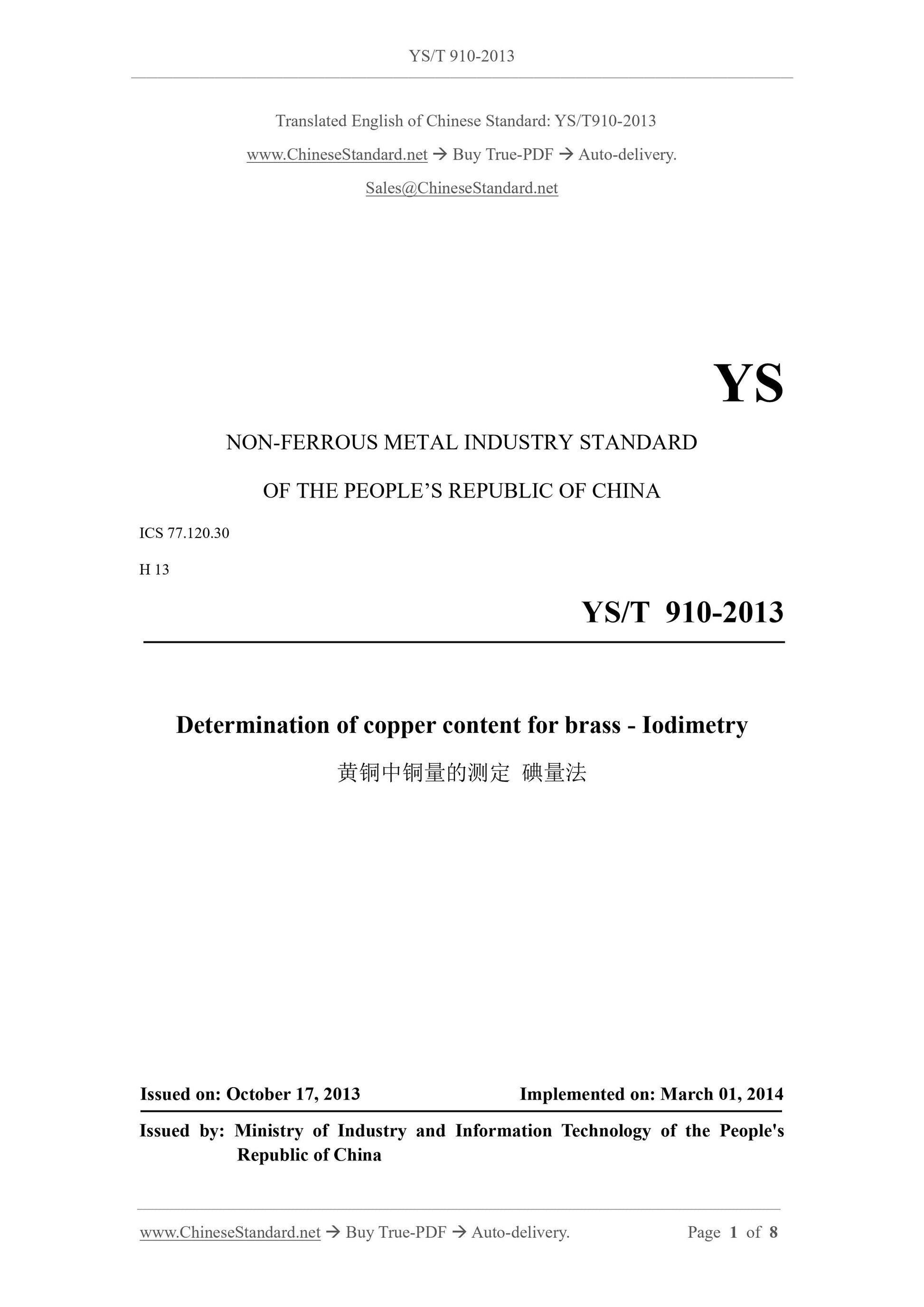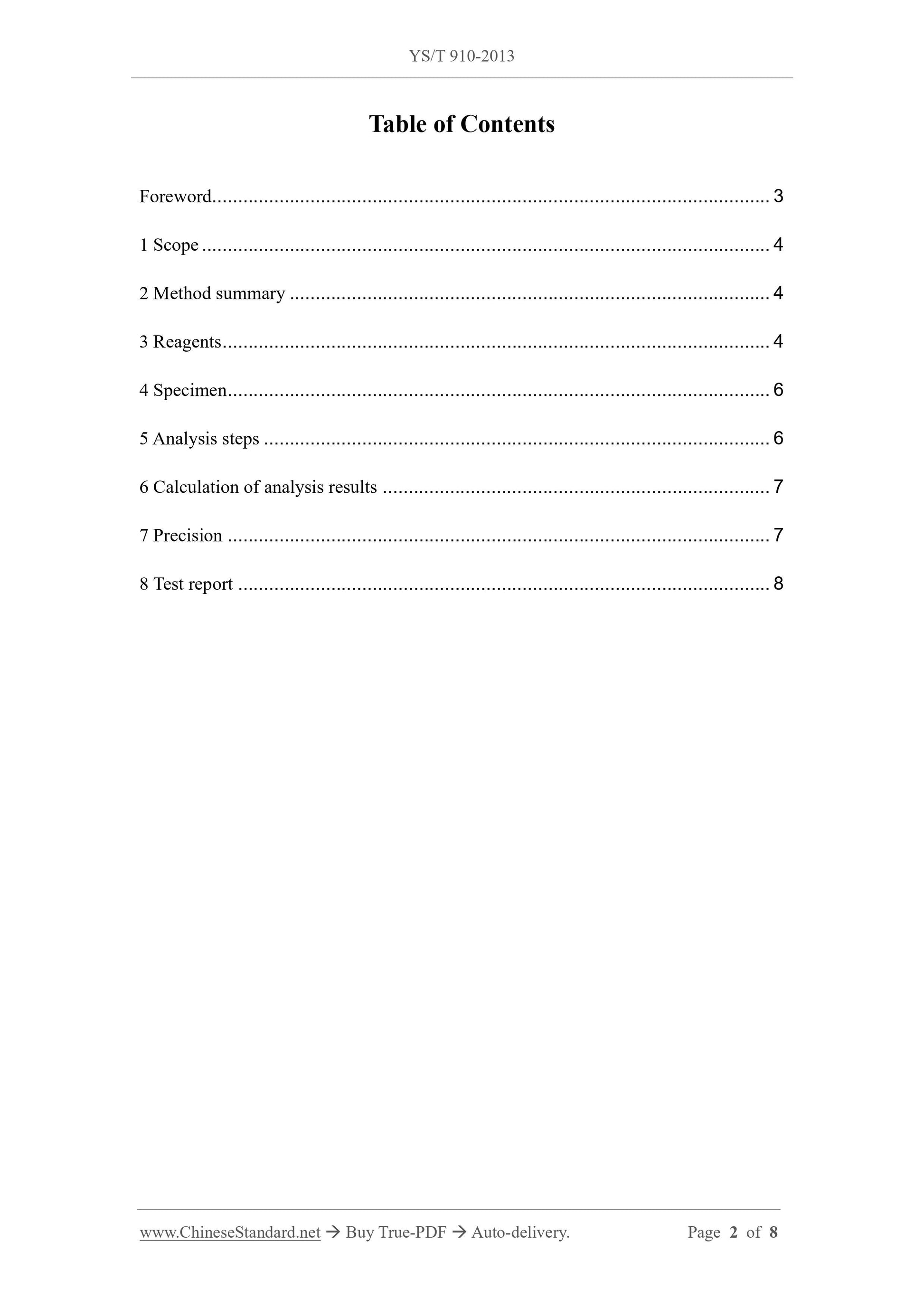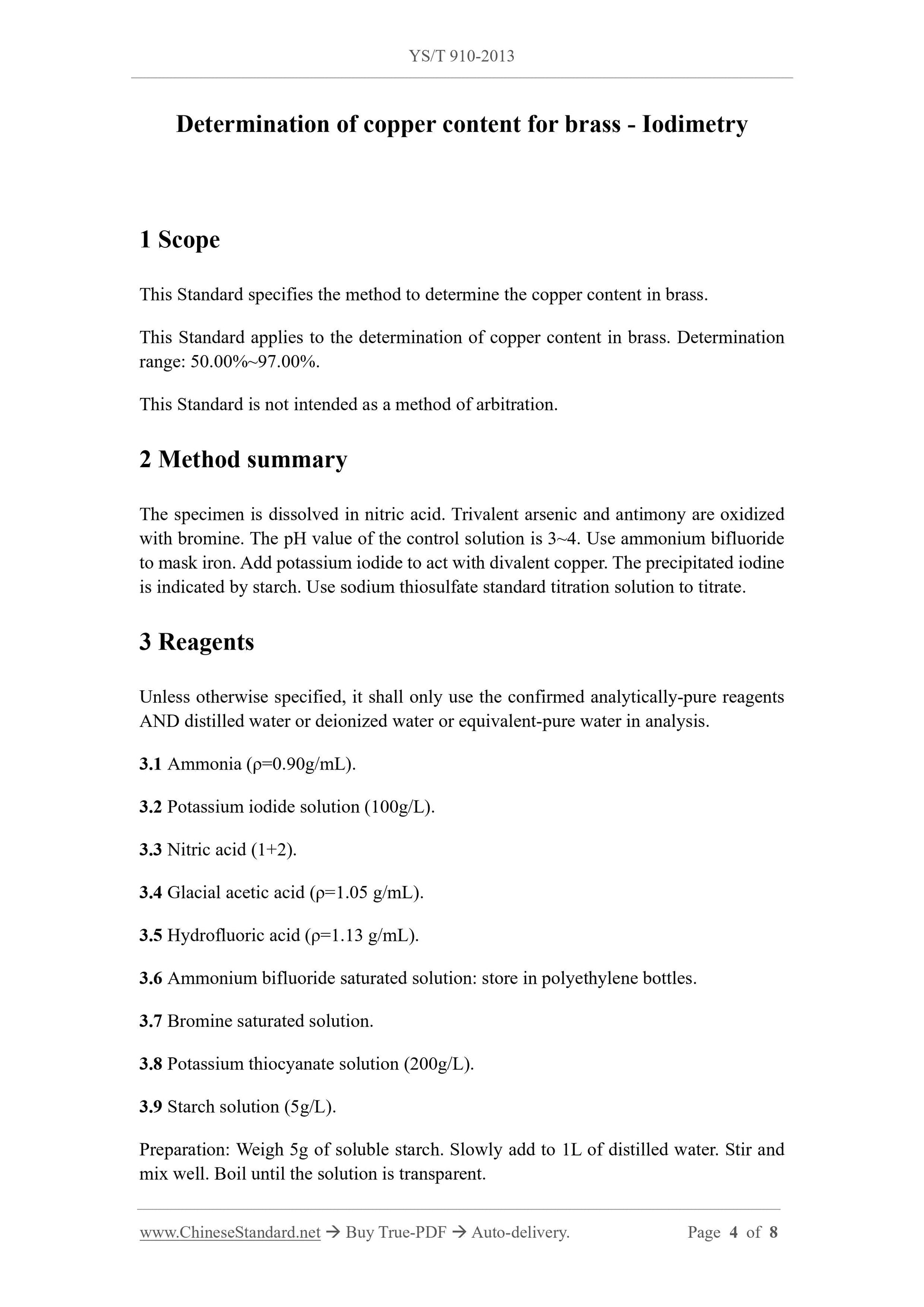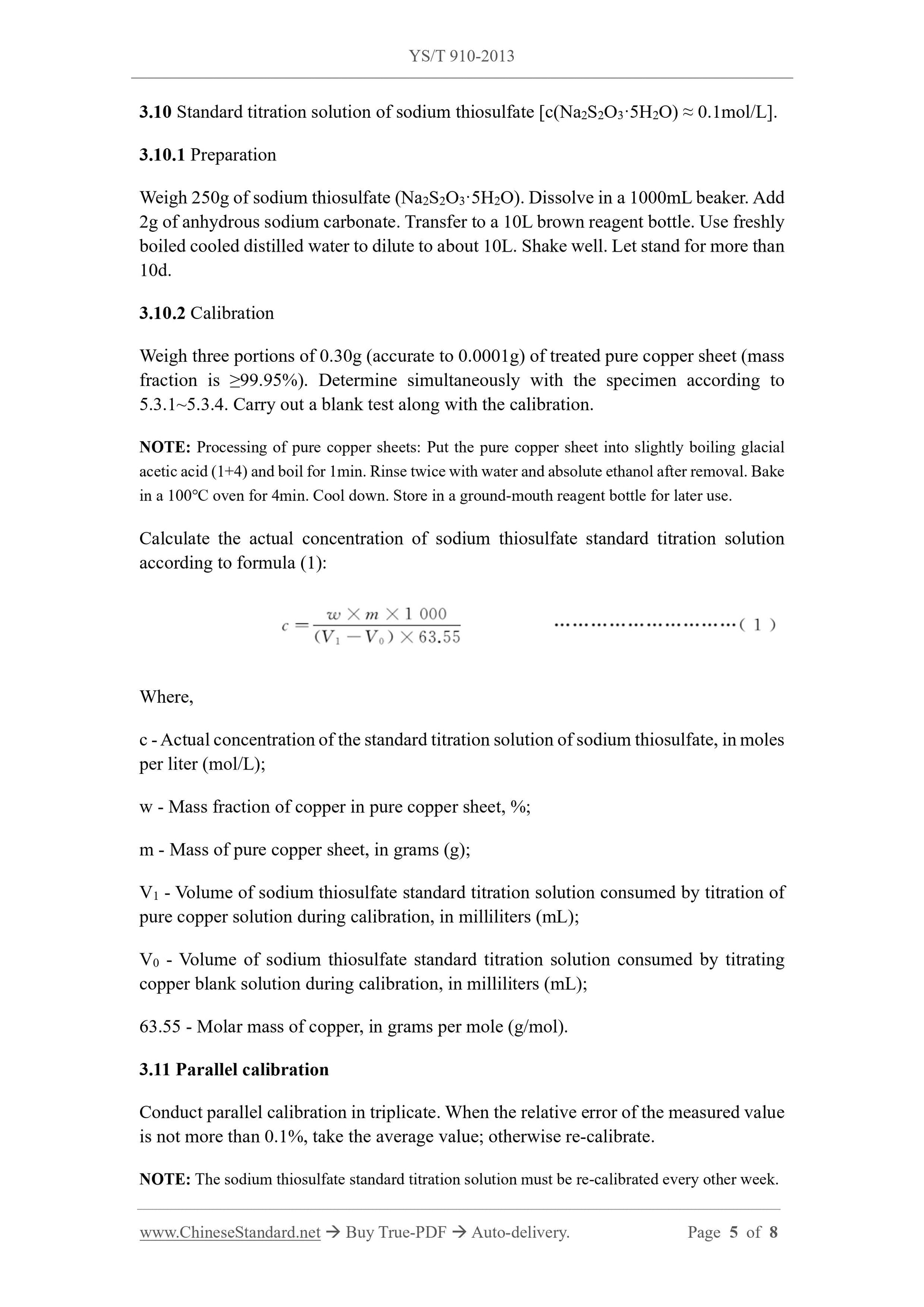1
/
of
4
www.ChineseStandard.us -- Field Test Asia Pte. Ltd.
YS/T 910-2013 English PDF (YS/T910-2013)
YS/T 910-2013 English PDF (YS/T910-2013)
Regular price
$130.00
Regular price
Sale price
$130.00
Unit price
/
per
Shipping calculated at checkout.
Couldn't load pickup availability
YS/T 910-2013: Determination of copper content for brass. lodimetry
Delivery: 9 seconds. Download (and Email) true-PDF + Invoice.Get Quotation: Click YS/T 910-2013 (Self-service in 1-minute)
Newer / historical versions: YS/T 910-2013
Preview True-PDF
Scope
This Standard specifies the method to determine the copper content in brass.This Standard applies to the determination of copper content in brass. Determination
range: 50.00%~97.00%.
This Standard is not intended as a method of arbitration.
Basic Data
| Standard ID | YS/T 910-2013 (YS/T910-2013) |
| Description (Translated English) | Determination of copper content for brass. lodimetry |
| Sector / Industry | Nonferrous Metallurgy Industry Standard (Recommended) |
| Classification of Chinese Standard | H13 |
| Classification of International Standard | 77.120.30 |
| Word Count Estimation | 6,627 |
| Regulation (derived from) | Ministry of Industry and Information Technology Bulletin No. 52, 2013; industry standard for filing Notice No. 1 of 2014 (No. 169 overall) |
| Issuing agency(ies) | Ministry of Industry and Information Technology |
| Summary | This standard specifies the method for the determination of copper content of brass. This standard applies to the determination of the amount of copper in brass. Measuring range: 50. 00% - 97. 00%. This standard is not as arbitration. |
Share







